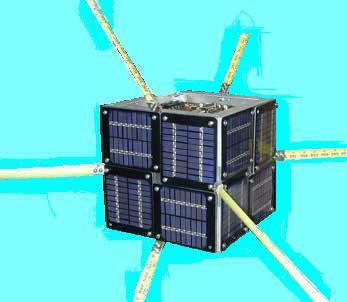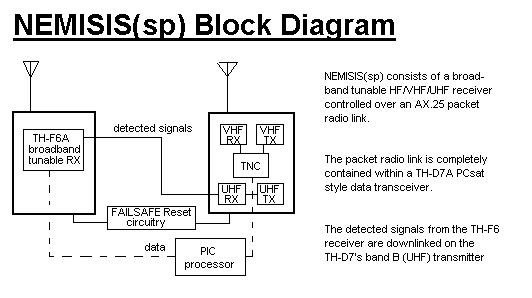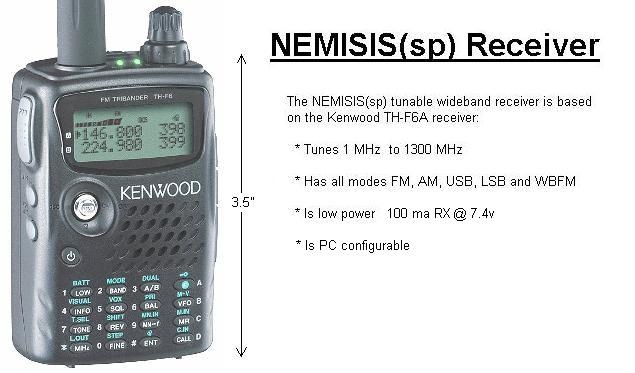 NEMISIS(sp)
NEMISIS(sp)

Naval-Academy EMI Space Integrated Sensor
Satellite Project
US Naval Academy Satellite Lab, Bob Bruninga, WB4APR
 NEMISIS(sp)
NEMISIS(sp)

NEMISIS(sp) is a potential US Naval Academy Aerospace student project designed to give students real hands on experience in satellite design and operations. The NEMISIS(sp) will accomplish these objectives:

NEMISIS(SP) OBJECTIVES: The objective of NEMISIS(sp) is to provide a very low cost Electromagnetic Interference detector on orbit that can be commanded to listen to any frequnecy in the electromagnetic spectrum from 1 MHz up to 1300 MHz. This tiny CUBEsat can help in the detection of harmful interference sources that affect satellite communications systems in the VHF and UHF ranges. This function is vital to both the Department of Defense (our launch provider) and the amateur satellite service which is increasingly experiencing terrestrial interference from unlicensed and un-coordinated emitters around the world. On our NEMISIS spacecraft, we will also be able to conduct other small experimental student experiments .

NEMISIS Position Determination: NEMISIS(sp) will also be able to detect the NAVSPASUR Radar Fence to help us locate it in space. Its receiver can be tuned to hear the NAVSPASUR Doppler as it flies over the RADAR fence and the downlink audio will allow for position determination on the ground.
CHALLENGES: The challenges to building NEMISIS(sp) are all hardware related. That being whether we can modify these off-the-shelf devices to the space environment and to autonomous fail safe operation.
CUBESATS: Cubesats are a program developed by Bob Twiggs at Stanford University as a means to provide low cost satellite launches for student and other low cost space experiments. All cubesats are the same 4" cube in size and are launched 3 at a time from simple standard launchers called P-PODS. Thus as many as a dozen or more may be launched on a single launch vehicle. Link to Stanford CUBESATS
You are visitor:
since 21 Aug 2002.
|
|
|